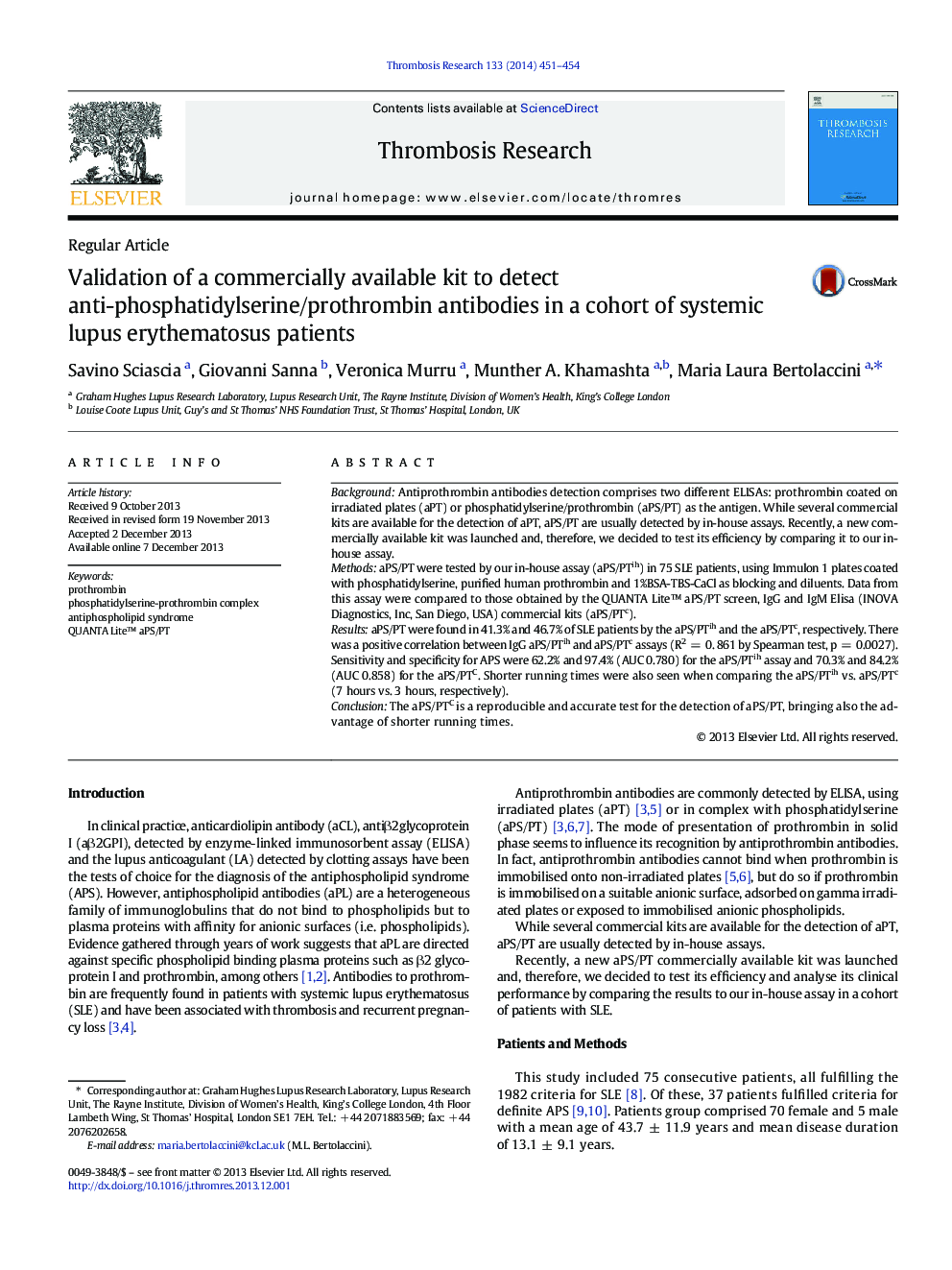| Article ID | Journal | Published Year | Pages | File Type |
|---|---|---|---|---|
| 6002434 | Thrombosis Research | 2014 | 4 Pages |
BackgroundAntiprothrombin antibodies detection comprises two different ELISAs: prothrombin coated on irradiated plates (aPT) or phosphatidylserine/prothrombin (aPS/PT) as the antigen. While several commercial kits are available for the detection of aPT, aPS/PT are usually detected by in-house assays. Recently, a new commercially available kit was launched and, therefore, we decided to test its efficiency by comparing it to our in-house assay.MethodsaPS/PT were tested by our in-house assay (aPS/PTih) in 75 SLE patients, using Immulon 1 plates coated with phosphatidylserine, purified human prothrombin and 1%BSA-TBS-CaCl as blocking and diluents. Data from this assay were compared to those obtained by the QUANTA Lite⢠aPS/PT screen, IgG and IgM Elisa (INOVA Diagnostics, Inc, San Diego, USA) commercial kits (aPS/PTc).ResultsaPS/PT were found in 41.3% and 46.7% of SLE patients by the aPS/PTih and the aPS/PTc, respectively. There was a positive correlation between IgG aPS/PTih and aPS/PTc assays (R2 = 0. 861 by Spearman test, p = 0.0027). Sensitivity and specificity for APS were 62.2% and 97.4% (AUC 0.780) for the aPS/PTih assay and 70.3% and 84.2% (AUC 0.858) for the aPS/PTC. Shorter running times were also seen when comparing the aPS/PTih vs. aPS/PTc (7 hours vs. 3 hours, respectively).ConclusionThe aPS/PTC is a reproducible and accurate test for the detection of aPS/PT, bringing also the advantage of shorter running times.
